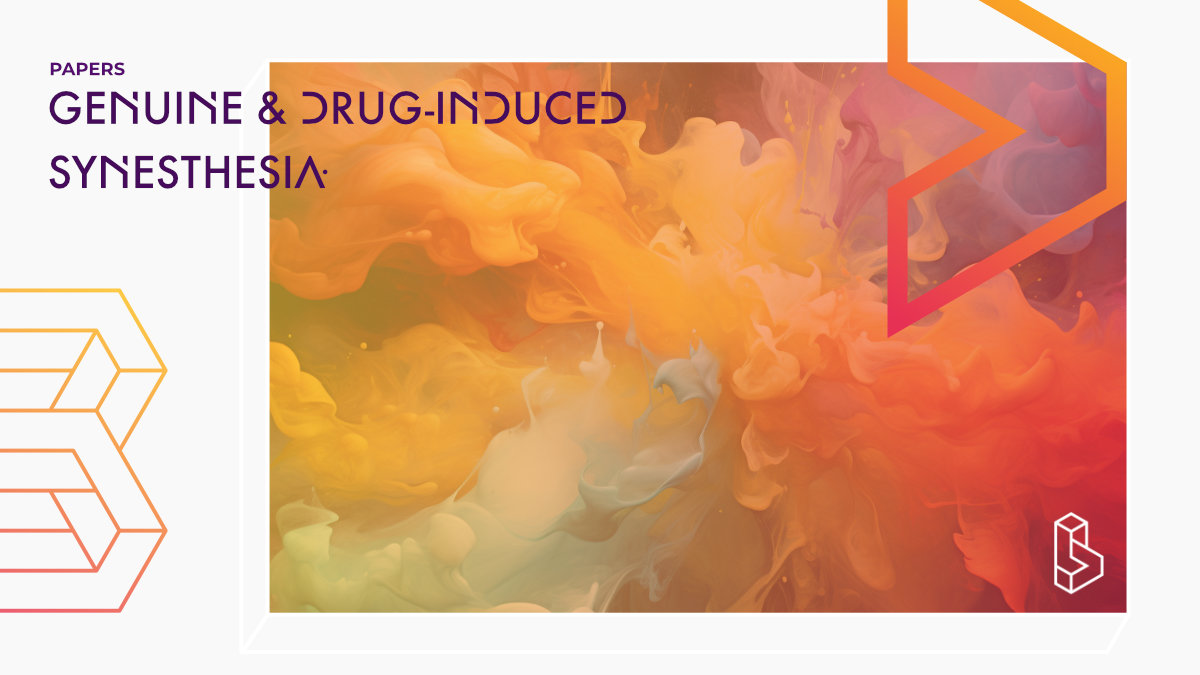This review (2012) systematically compares different types of synaesthesia (genuine, acquired, and drug-induced) concerning their phenomenological features and their relation to etiological models. Drug-induced forms of synaesthesia exhibit greater intensity on a much broader phenomenological spectrum, which appears to be based on functional changes in brain activity, whereas acquired synaesthesia points to morphological differences as their underlying cause.
Abstract of Genuine and drug-induced synesthesia
“Introduction: Despite some principal similarities, there is no systematic comparison between the different types of synesthesia (genuine, acquired and drug-induced).
Methods: This comprehensive review compares the three principal types of synesthesia and focuses on their phenomenological features and their relation to different etiological models. Implications of this comparison for the validity of the different etiological models are discussed.
Results: Comparison of the three forms of synesthesia show many more differences than similarities. This is in contrast to their representation in the literature, where they are discussed in many respects as being virtually similar.
Discussion: Noteworthy is the much broader spectrum and intensity with the typical drug-induced synesthesias compared to genuine and acquired synesthesias. A major implication of the phenomenological comparison in regard to the etiological models is that genuine and acquired synesthesias point to morphological substrates, while drug-induced synesthesia appears to be based on functional changes of brain activity.“
Authors: Christopher Sinke, John H. Halpern, Markus Zedler, Janina Neufeld, Hinderk M. Emrich & Torsten Passie
Summary of Genuine and drug-induced synesthesia
Synesthesia is a crossing of sensory perceptions, where stimulation within one sensory modality leads to an internally generated perceptual experience of another sensory modality.
Acquired synesthesia can be experienced after brain damage or sensory deafferentation. Phosphenes are visual phenomena elicited by stimulating the retina mechanically, electrically, magnetically, or directly stimulating the occipital cortex.
Drug-induced synesthesia is experienced temporarily during acute effects of a hallucinogen (mescaline, psilocybin, LSD) intoxication. It is accompanied by a dream-like state of consciousness, an intensification of affectivity, a decrease in self-control, and a change in time perception and thinking abilities.
Find this paper
Genuine and drug-induced synesthesia: a comparison
https://doi.org/10.1016/j.concog.2012.03.009
Open Access | Google Scholar | Backup | 🕊
Cite this paper (APA)
Sinke, C., Halpern, J. H., Zedler, M., Neufeld, J., Emrich, H. M., & Passie, T. (2012). Genuine and drug-induced synesthesia: a comparison. Consciousness and cognition, 21(3), 1419-1434.
